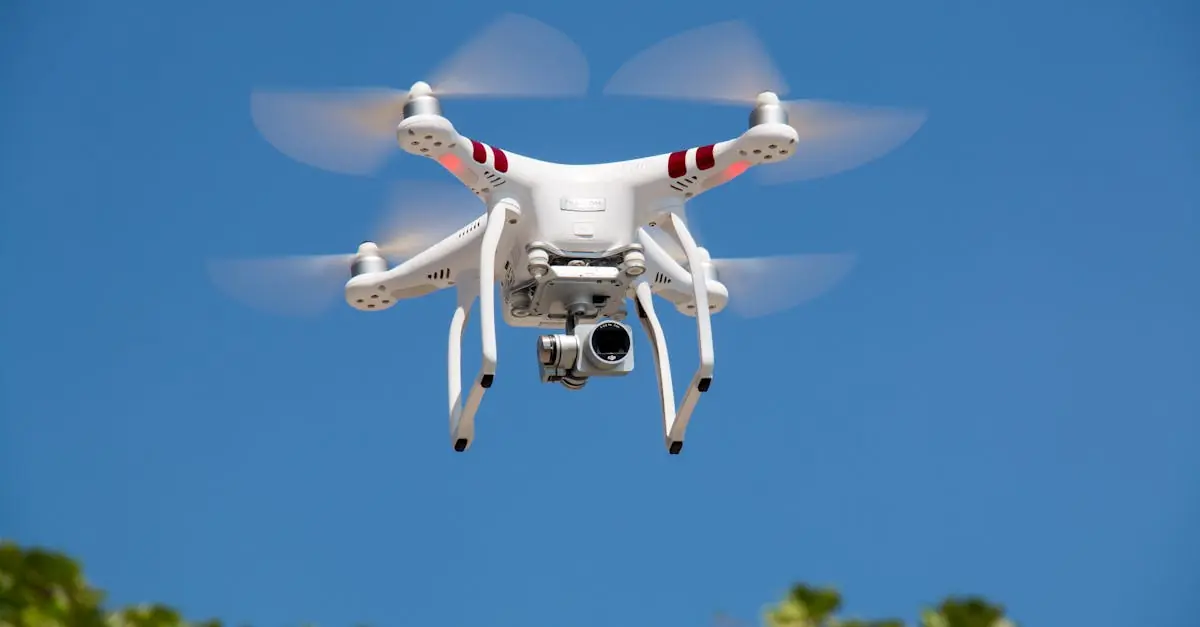Table of Contents
ToggleIn the high-stakes world of aviation, flight control computers are the unsung heroes keeping planes soaring smoothly through the skies. These sophisticated systems are like the brains of an aircraft, tirelessly crunching numbers and making split-second decisions to ensure a safe journey. Imagine a pilot’s trusty sidekick who never gets tired or asks for coffee breaks. That’s your flight control computer!
Overview of Flight Control Computers
Flight control computers act as the central nervous system of an aircraft. These sophisticated systems integrate a variety of sensors and inputs from the aircraft’s environment, including altitude, speed, and orientation. Engineers design flight control computers to execute flight maneuvers with precision, enhancing safety and efficiency.
Data processing capabilities set these computers apart. Rapid calculations ensure timely responses to changing flight conditions. Algorithms designed for stability control help maintain an optimal trajectory, even during turbulent weather. Input from multiple sources allows these computers to make informed decisions.
Various components contribute to the functionality of flight control computers. Sensors detect key parameters, while actuation systems respond to commands with high accuracy. Redundancy in critical systems minimizes failure risk, providing backup options that enhance reliability.
Different aircraft employ distinct types of flight control computers. Commercial airliners typically use digital fly-by-wire systems that promote aerodynamic efficiency. Military aircraft might incorporate advanced systems equipped for combat scenarios, showcasing the versatility of these computers.
Training and simulation play vital roles in developing effective flight control systems. Engineers use real-world data during the design phase, enabling systems to better adapt to actual flight conditions. Continuous upgrades and maintenance ensure that flight control computers remain at the forefront of technological advancements.
Key Components of Flight Control Computers
Flight control computers consist of several critical components that collaborate to ensure safe and efficient aircraft operation. Each part plays a unique role in maintaining flight stability and control.
Sensors and Input Devices
Various sensors collect data essential for flight. Altitude sensors measure height, while airspeed sensors determine velocity. Inertial sensors track orientation and acceleration. These devices transmit real-time information to the flight control computer, enabling precise monitoring of flight conditions. Lidar and radar systems further enhance situational awareness by identifying obstacles and terrain features. Ultimately, integrating these sensors provides a comprehensive view of the aircraft’s environment.
Processing Units
Processing units serve as the brain of flight control computers. They rapidly analyze incoming data from numerous sensors. Using advanced algorithms, these units calculate necessary adjustments for maintaining stability. Moreover, redundant processing units ensure reliability and maintain functionality in case of a malfunction. These units communicate with each other, enabling quick decision-making to adapt to changing flight conditions. Overall, robust processing capabilities are vital for safe aircraft operation.
Actuators and Output Systems
Actuators and output systems translate the processed commands into physical movements. Servomotors and hydraulic systems adjust control surfaces, such as ailerons or elevators, based on flight control inputs. These systems respond quickly to ensure accurate maneuvering. Incorporating feedback loops allows actuators to adjust dynamically, maintaining desired flight paths. Reliability in these components is crucial, as they directly influence the aircraft’s response to pilot commands. In summary, effective actuators create a responsive connection between the flight control computer and the aircraft’s control surfaces.
Functions of Flight Control Computers
Flight control computers perform essential functions that ensure the safe and efficient operation of aircraft. Their primary role encompasses stability and navigation.
Flight Stability and Control
Flight stability maintains an aircraft’s orientation and trajectory during flight. These systems monitor data from numerous sensors that track factors such as altitude, speed, and pitch. They calculate necessary adjustments in real-time to prevent unwanted movements. Algorithms inside the computers manage stability control, allowing for quick responses to turbulence or wind changes. Reliable flight control ensures passenger safety and comfort while maintaining optimal performance.
Navigation and Guidance
Navigation and guidance involve directing an aircraft along its intended flight path. Flight control computers integrate GPS data with internal sensor information to provide accurate positioning. They guide the aircraft during takeoff, cruising, and landing phases. Adjustments made based on environmental inputs, such as weather and air traffic, help optimize routes. Altogether, these functions enhance efficiency and safety, ensuring smooth transitions through various flight stages.
Importance of Flight Control Computers in Aviation
Flight control computers are vital for the safe operation of aircraft. These systems manage airplane stability and navigation, acting as the brain that processes critical data. High-speed data processing lets them make quick decisions, ensuring smooth flight regardless of conditions.
Integration of various sensors plays a significant role. Sensors collect essential data on altitude, speed, and orientation. Such data allows flight control computers to execute precise maneuvers, enhancing both safety and efficiency in real time. Algorithms help maintain stability, ensuring an optimal trajectory even during turbulent weather.
Components of flight control computers comprise sensors, processing units, and actuators. Actuators translate commands into physical adjustments of control surfaces, such as ailerons and elevators. Reliability stems from redundant systems that minimize failure risks, further ensuring safe aircraft operation.
Training and simulation are crucial for developing effective flight control systems. Engineers rely on real-world data during designs to adapt systems to actual flight conditions. Continuous upgrades keep these computers at the leading edge of technological advancements.
In the context of navigation, flight control computers utilize GPS data with input from internal sensors. These integrations provide accurate positioning during takeoff, cruising, and landing phases. Adjustments based on environmental factors enhance route optimization and overall safety.
Ultimately, the functions encapsulated by flight control computers prioritize passenger safety and operational efficiency. They represent the pinnacle of aerospace technology, combining rapid data processing and sophisticated algorithms to create a safe flying experience.
Future Trends in Flight Control Technology
Emerging technologies shape the future of flight control systems, enhancing performance and safety. Artificial intelligence plays a significant role in optimizing data processing, improving decision-making in real-time scenarios. Advanced machine learning algorithms analyze vast datasets from sensors, allowing flight control computers to adapt to evolving circumstances.
Increased integration of autonomous systems indicates a shift toward greater automation in aviation. Unmanned aerial vehicles (UAVs) illustrate this trend by utilizing flight control computers for navigation and control without direct human intervention. Enhanced autonomous features expect to extend into commercial airliners, boosting operational efficiency and reducing pilot workload.
Cloud computing facilitates real-time data sharing between aircraft and ground stations, enhancing situational awareness. This capability allows for quicker responses to developing situations and supports collaborative decision-making among operators. Improved connectivity strengthens the support for predictive maintenance, as flight control systems offer crucial insights into potential issues before they become critical.
Additionally, the implementation of blockchain technology enhances security within flight control systems. This addition provides an immutable record of data transactions, deterring tampering and ensuring the integrity of operational information. Ensuring robust cybersecurity measures becomes paramount as systems grow increasingly connected and complex.
Sustainability initiatives drive the development of eco-friendly flight control technologies. Innovations in energy-efficient navigation systems contribute to reduced fuel consumption and lower emissions. Electrification of flight systems continues to gain traction, with flight control computers integrating renewable energy sources to support sustainable aviation.
Collaboration among manufacturers, researchers, and regulatory bodies influences future advancements. Joint efforts focus on creating standards and best practices for next-generation flight control systems, ensuring safety and interoperability across various aircraft types. Exploration of these trends confirms the trajectory of aviation technology toward more intelligent, autonomous, and sustainable operations.
Conclusion
Flight control computers are fundamental to modern aviation, ensuring safe and efficient aircraft operations. Their ability to process data swiftly and execute precise maneuvers enhances overall flight stability and navigation. As technology evolves, the integration of artificial intelligence and cloud computing promises to further optimize these systems, paving the way for greater automation and improved safety measures.
The future of flight control technology looks bright with ongoing advancements aimed at sustainability and security. Collaboration among industry stakeholders will be crucial in developing standards that ensure reliability and interoperability. As these systems continue to evolve, they’ll play an even more significant role in shaping the future of aviation, making air travel safer and more efficient than ever before.




